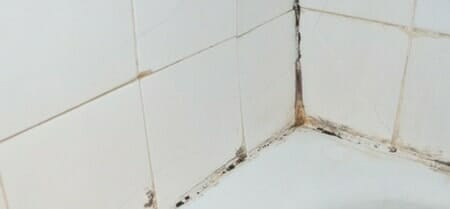In this article down the page you will find some quality points regarding Preventing Water Damage in the Bathroom.

The shower room is extremely prone for damp buildup as well as prospective water damages due to the frequent use water in it. This article offers basic examination strategies to help identifying water damage threats.
The frequent use water in the restroom makes it exceptionally vulnerable for wet accumulation as well as possible water damage. By evaluating it regularly, you can decrease water relevant problems.
The complying with collection of inspections is simple to do and also ought to be done as soon as in every 3 months in order to keep your shower room healthy and also to avoid possible water problems caused by the tub, the shower, pipeline joints and plumbing, sinks, cupboards, and also the toilet
Do not overlook executing these inspections as well as be complete while performing them. Keep in mind that these easy assessments can conserve you a great deal of money by offering early indicators for water damages
Bath tub and Shower
The shower as well as tub call for unique attention and maintenance. Inspect the ceramic tiles and also change if cracked. Make sure that there is no missing grout between the ceramic tiles. Check and also change cracked caulking at joints where the walls meet the floor or the tub. Blocked drains pipes and also pipelines troubles will certainly prevent the bathtub from drying and may indicate serious problems below the tub. Speak with an expert promptly to stop architectural damages. Focus on discolorations or soft areas around the bathtub walls as they may indicate an internal leak.
Plumbing
Signs for water damage are hard to detect since the majority of pipelines are mounted inside the wall surfaces.
Pay unique interest to flooring as well as walls moisture and stains as they might show an unseen plumbing trouble. Inspect wetness levels in adjoining rooms too.
Sinks and also Cabinets
Sinks as well as cupboards are exposed to moisture and moisture day-to-day as well as are typically neglected. Evaluate consistently under the sink and also on the counter top above it. Repair any kind of drip in the catch as it may suggest drainpipe issues. Take a look around the sink, slow draining pipelines might suggest a blocked drainpipe. Change sink seals if they are broken or loosened.
The Commode
The bathroom is a vulnerable water joint. Inspect the water lines and look for leaks around the toilet seat, in the tube, as well as under the water tank. If you detect any kind of indications of moisture on the flooring around the toilet, look for leaks in the toilet edge and storage tank seals.
Be aware that hanging commode bowl antiperspirants increases the possibilities for clogs.
Water Damage Signs In The Bathroom To Avoid Cleanup
Musty smell
This is one of the easiest signs to catch because musty smells are so odorous. The damp, earthy, moldy smell should be a big red flag. The smell will develop when moisture gets trapped in surfaces, and begins to facilitate mold growth. Leaking pipes under cabinets, inside walls, and behind shower fixtures will cause moisture to stay trapped and not dry, which will lead to mold growth and spread. As soon as you notice any musty smells in your bathroom, have it checked for hidden water damage and cleanup signs.
Visible mold
If the smell isn’t there to give it away, sometimes you will actually see mold growth. Finding mold in your bathroom is a serious problem, because mold is very harmful to your health. By the time mold growth is visible, it also means that water damage has already occurred and been present for some time. The only way the mold problem can be resolved is to find the source of the moisture and get it stopped. To safely and adequately remove mold, you need to have professionals handle the remediation. Do not waste any time in getting mold problems addressed, fixed, and sanitized so that you can protect you and your family from the many respiratory symptoms caused by mold exposure.
Damaged floors
Bathroom floors should be able to withstand some exposure to water while still remaining in good condition. However, when excess exposure or water leaks occur, they will begin to damage even the most water-resistant flooring. If you notice any cracking, bubbling, staining, or warping on your bathroom floors, there is probably a water leak somewhere causing the distortion. If you notice areas of the floor have become softer, or even have a spongy feeling, there is probably damage to the subfloor. Subflooring is typically made up of plywood. When plywood is exposed to water or moisture, it will absorb it. Once it has become saturated, the weight of the excess water will cause the wood to swell and soften. Check the floors in your bathroom frequently to catch any of these sings before they lead to damaged subflooring.
Changes on walls
When water leaks behind walls, it will cause changes in the drywall. Peeling plaster, blistering paint, and soggy wallpaper are all good indicators that excess water is building up behind the wall. Water leaking behind drywall will cause it to swell and be soft to the tough. If you start to notice gaps along the trim of your walls, or where tile meets the wall, it could also be a strong indicator that there is a leak behind the wall. Any changes, distortion, or damage on the walls should be evaluated as soon as you notice it to prevent further water damage and cleanup.

We were shown that editorial about How to Prevent Bathroom Water Damage through someone on a different blog. If you please take the time to share this article if you enjoyed reading it. We recognize the value of reading our article about How to Fix a Water Damage Bathroom.
Schedule A Service Call
Comments on “Preventing Water Damage in the Bathroom”